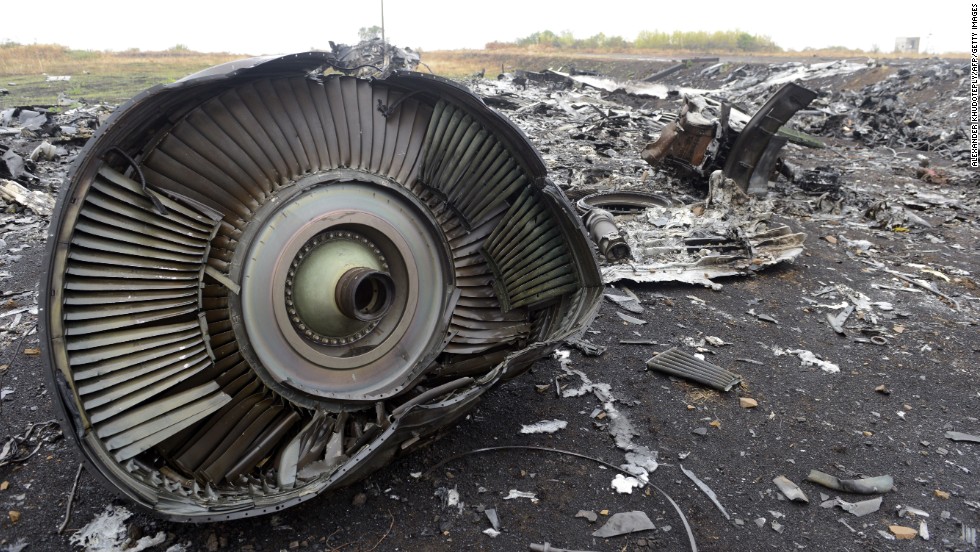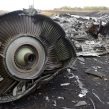
Moscow Rejects Dutch Findings and the Malaysian Proposal of an MH17 Crash Tribunal
Publication: Eurasia Daily Monitor Volume: 12 Issue: 133
By:

On July 17, 2014, Malaysian passenger jet Flight MH17 was shot out of the sky over the territory of Ukrainian Donbas controlled by Moscow-backed separatists, killing all 298 people on board (most of them—Dutch citizens). The Ukrainian authorities have accused the separatist rebels of shooting down MH17 with a surface-to-air BUK M1 missile (known in the West as the SA-11 “Gadfly”), fired from separatist-controlled territory and possibly provided by Russia or made operational with Russian technical assistance. The rebels and the Russian military have angrily rejected any responsibility and, in turn, blame the Ukrainian military. In a recent interview, the United States’ ambassador to Moscow, John Tefft, told Russian journalists, who asked why Washington is blaming the rebels and the Russians: “I cannot go into details, but we know for sure who shot down the aircraft [Flight MH17]—all is absolutely clear. And the world knows who [did it]” (Moskovsky Komsomolets, July 8).
Dutch air safety officials have essentially concluded their investigation of the material evidence of the MH17 crash and have sent out confidential copies of a draft report to other countries, including Russia, for review. The final report may be published sometime next October. Russia’s passenger air traffic control authority Rosaviatsiya announced it will publish a rebuttal of the Dutch draft report. A deputy chief of Rosaviatsiya, Oleg Storchevoy, told reporters in Moscow: “I cannot go into details, because the draft report is still confidential, but we have a lot of repudiations.” Storchevoy accused the report of bias and seeking out evidence to support a particular version, while Russia believes that Flight MH17 could have been shot down “by a surface-to-air missile (SAM) or an air-to-air missile (AAM) fired by another jet” (Interfax, July 16).
The notion that MH17 was shot down by another jet has been an essential part of the Russian cover-up. In July 2014, days after the Flight MH17 disaster, at a press conference in Moscow, the chief of the Main Operational directorate of the General Staff of the Russian Armed Forces, Lieutenant-General Andrei Kartopolov, supported by the chief of staff of the Russian Air Force, Lieutenant-General Igor Markushev, told reporters: Flight MH17 was possibly shot down by a Ukrainian Su-25 “Frogfoot” attack plane firing an R-60 AAM missile (NATO reporting name: AA-8 “Aphid”). The Russian generals repudiated official Ukrainian denials (Interfax, July 21, 2014).
The Russian Investigative Committee has reiterated this week: “The main version of the MH17 disaster is an attack by an AAM.” The Investigative Committee announced it has collected witness evidence and expert opinions that Flight MH17 was hit by an AAM and “this missile was not made in Russia” (Interfax, July 15). According to pro-Kremlin Moscow daily Komsomolskaya Pravda, the AAM that shot down Flight MH17 was an Israeli-made Python missile built by Rafael Advanced Defense Systems and possibly smuggled into Ukraine via Georgia together with a specially modified Su-25 jet, which could indicate a wide-spread international conspiracy to tarnish Russia’s reputation (Komsomolskaya Pravda, July 15).
This week (July 11), Novaya Gazeta published a summary of its almost year-long investigation into the Flight MH17 disaster. Much of this journalistic investigation was an attempt to verify the numerous explanations produced by the Moscow-backed rebels and the Russian military and law enforcement authorities, which all seemed to have lacked substance. Witness reports and forensic evidence indicate that Flight MH17 disintegrated in mid air instantaneously, hit by a massive SAM and not by a small air-to-air missile (Novaya Gazeta, July 11).
In June 2015, state-owned corporation Almaz-Antey—Russia’s monopoly producer of anti-aircraft missiles—presented a report recognizing that Flight MH17 was most likely shot down by a Buk-M1 9M38-M1 missile. The Almaz-Antey report implied the missile was fired from the vicinity of the Donbas town of Zaroshenskoe and not from Snizhne, where local witnesses reported a missile launch and filmed the presence of a rebel- or Russian-controlled Buk-M1 launcher. One year ago, in July 2014, General Kartopolov produced satellite imagery of allegedly Ukrainian Buk-M1 launchers deployed just south of Zaroshenskoe, implying they could have destroyed Flight MH17 (see EDM, June 4). According to the Novaya Gazeta investigation, Zaroshenskoe was under rebel control on July 17, 2014, and the local population told the newspaper’s reporter there were no Buk-M1 launchers, Ukrainian or rebel, in Zaroshenskoe on July 17, 2014, or ever. The Russian Ministry of Defense’s satellite photos of Ukrainian Buk-M1 launchers in Zaroshenskoe could have been doctored using image editing software. Novaya Gazeta found multiple pieces of evidence and witnesses of a Buk-M1 launcher moved from the Russian border to Snizhne, were a SAM was fired (Novaya Gazeta, July 11).
According to Wim de Bruin, a spokesman for the Dutch chief prosecutor’s office, a criminal investigation may lead to “charges of murder and possibly war crimes” against a group of people at present unidentified (Interfax, July 16). Malaysia, supported by the Netherlands, Australia, Belgium and Ukraine, has tabled a draft resolution in the United Nations Security Council to create a special tribunal to prosecute the alleged perpetrators of the Flight MH17 disaster (RIA Novosti, July 15). The Kremlin refused to comment on the special tribunal resolution, but Russian diplomats denounced it as “unacceptable” and part of a smear campaign, indicating a possible veto (Interfax, July 15). According to the Moscow press, Beijing may support the Russian veto in the Security Council (Moskovsky Komsomolets, June 15).
Ukrainian Lieutenant-General (ret.) Igor Romanenko has said that a rebel (Russian) spy texted a message, on July 17, 2014, about a Ukrainian An-26 military transport propeller-driven aircraft taking off to fly over Donbas to the Russian border on an air supply mission to support Ukrainian troops. The spy’s message was intercepted and the An-26 flight was canceled; but the rebel Buk-M1 crew was already alerted that a high-value target was apparently on its way. The relatively primitive radar targeting equipment of the Buk-M1 launcher did not allow the crew to recognize the difference between an An-26 and the Flight MH17 Boeing 777, which was apparently shot down by mistake. As the extent of the tragedy became apparent, Moscow began a traditional Russian campaign of total rejection of blame—and this cover-up persists in full swing today (Novaya Gazeta, July 11).




